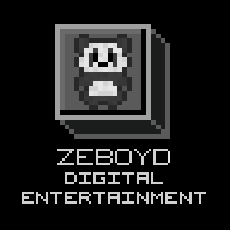For fun, I decided to go back and count up how many maps are in our previous RPGs. Note, these map counts are based on the current version of each game so they include any additions we made after launch. They also don’t include slightly modified versions of existing maps & cutscene-only maps.
BoDVII = 54 maps.
Cthulhu Saves the World = 101 maps.
Penny Arcade’s On the Rain-Slick Precipice of Darkness 3 = 40 maps.
Breath of Death VII’s map count seems unusually high for how short a game it is (you can beat it in around 4 hours) but keep in mind that these map counts don’t necessarily reflect the size of the individual maps. Breath of Death in particular had several smaller maps (like tiny rooms with staircases) that artificially inflate the map count.
Cthulhu Saves the World was our first epic RPG and it shows. It has a drastically higher map count than Breath of Death VII and the maps in Cthulhu Saves the World tend to be noticeably larger on average as well. However, I think we probably took things a little too far. Especially in the second half of the game, the dungeon can get to be too repetitive and too complicated. In particular, the bridge system means that some of the dungeons can get really windy & unintuitive. They’re nowhere near as bad as some actual 16-bit RPGs that I can think of (Phantasy Star II being the most egregious example), but they don’t really fit our otherwise fast-paced approach to RPG design. Later on in the game’s development, we added some candle sprites to some of the dungeons as hints (go this way!) but even so, we would do things differently if we were to make the game now.
In Penny Arcade’s On the Rain-Slick Precipice of Darkness 3, I think we veered too much in the opposite direction. The game’s design originally called for maps similar to the game’s world map (path-based) but we decided to change the design and open things up before launch. Since monsters could be seen before you fought them and did not regenerate, that also made the maps much easier to navigate as well (since if you saw a monster group, that meant you hadn’t explored that area yet) and you didn’t have to worry about random encounters when backtracking. Instead of complaining that they were getting lost in our dungeons, players began to complain that there weren’t enough opportunities to explore. Monster groups also were sometimes placed too closely to each other with the result that the pacing feeling a little bit staccatto. Despite the smaller map count, the individual maps tended to be bigger, combat tended to require more thought, and there was generally more dialogue than in our previous games, so if anything the actual playtime in Precipice of Darkness 3 was longer than that of Cthulhu Saves the World.
With Penny Arcade’s On the Rain-Slick Precipice of Darkness 4, I think we’ve finally figured things out. Locations tend to be larger than they were in the previous game, but nowhere near as confusing as some of the dungeons are in Cthulhu Saves the World. There are some nice secrets and alternate paths scattered here and there as well as a few completely optional areas to explore. The overall visual quality of the maps is much higher than our previous games (as you can see by looking at some of the screenshots we’ve released so far here) and there’s much more variety in visual style from location to location. Not only that, but we’ve tried to put more variety within single locations so that the later maps in a dungeon don’t look exactly like the earlier maps. We’ve spread the battles out a little more as well which should help with the game’s pacing and feel. I don’t know how many maps the final game will have since we’re still not quite done, but we’ve got about 70 maps in already with a few more left to go so the game should be quite beefy.
We’re pleased with how the maps are turning out in Precipice of Darkness 4, but we’re not going to stop there. For our next game (CSH), we’re planning on adding more interactive elements to maps, more neat set-pieces, and maybe a few fun puzzles as well. And we’re constantly on the lookout for new ideas and ways to improve.


Oh and I’d prefer more town maps over dungeon maps.
You can actually download a complete fan translation for the remake of PS1, AKA Phantasy Star Generations I, from ROMHacking.net.
I’m aware that the Phantasy Star games were remade, but I feel that those remakes were rather shallow in certain respects. Also, they weren’t released outside of Japan.
They did remake the phantasy stars, but it was Japan only. I checked out a few of my favorite songs from phantasy star 2, my favorite being the Dam music, on youtube and saw links to versions from the remade ones as well.
You know, I was playing Phantasy Star II a while back, and I must say that your RPG designs spoiled me. I’d love for Sega to commission you to recreate Phantasy Star and Phantasy Star II with updated game play mechanics (namely your random encounter counter and being able to enter battle from a menu command, rather than by walking back and forth until a random encounter occurs).
Phantasy Star II would also benefit from better map design. The dungeons in that game are just cruel.